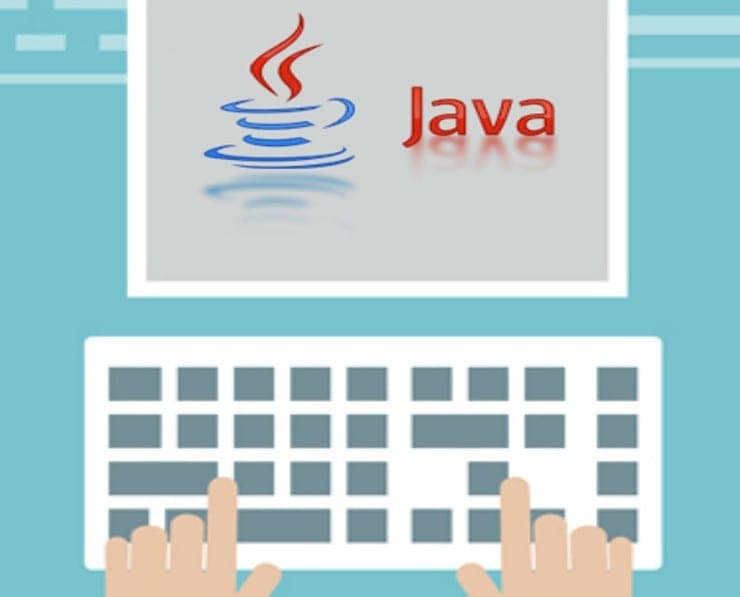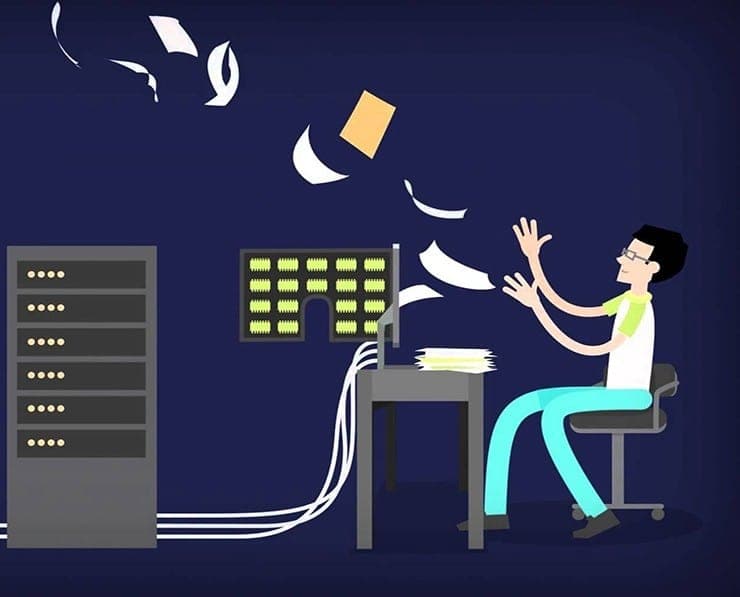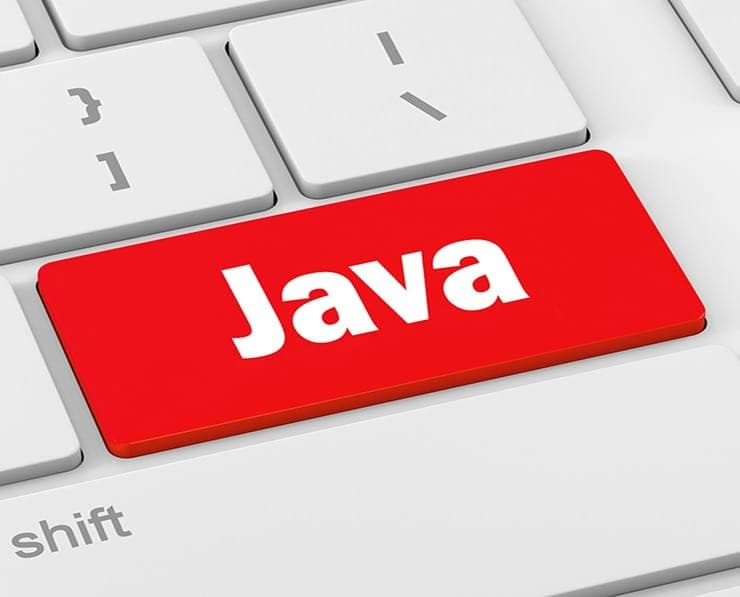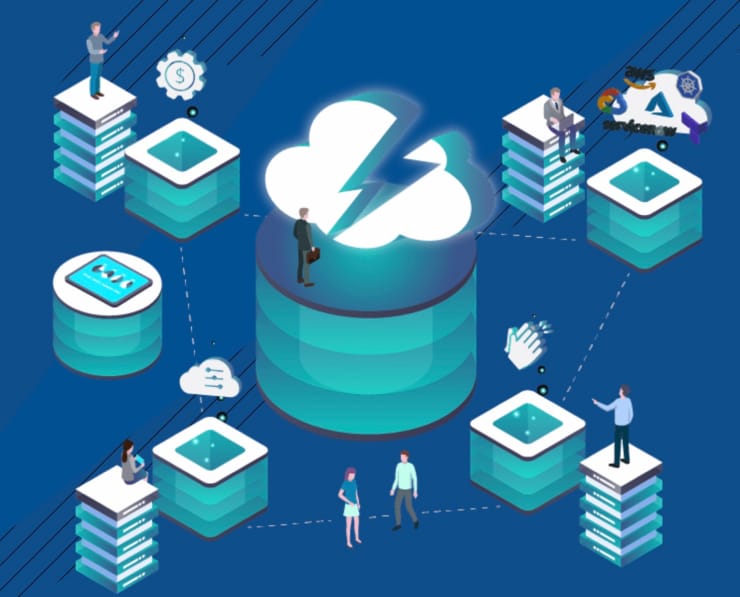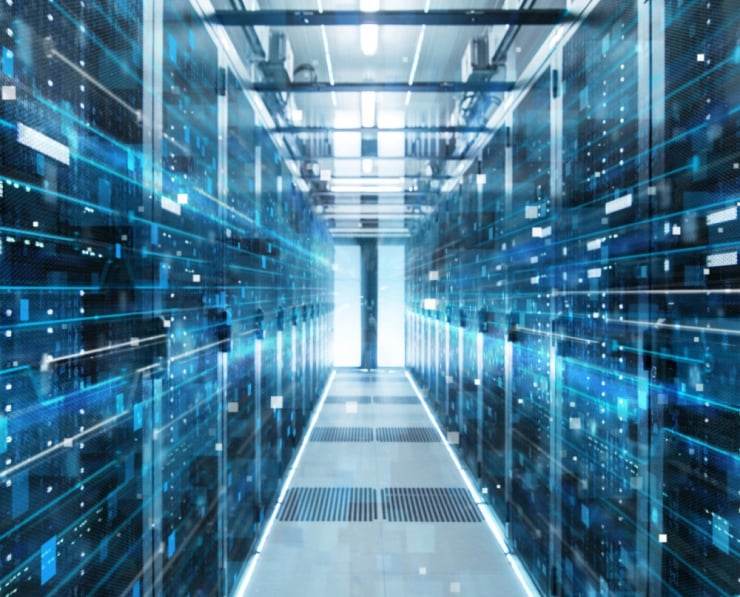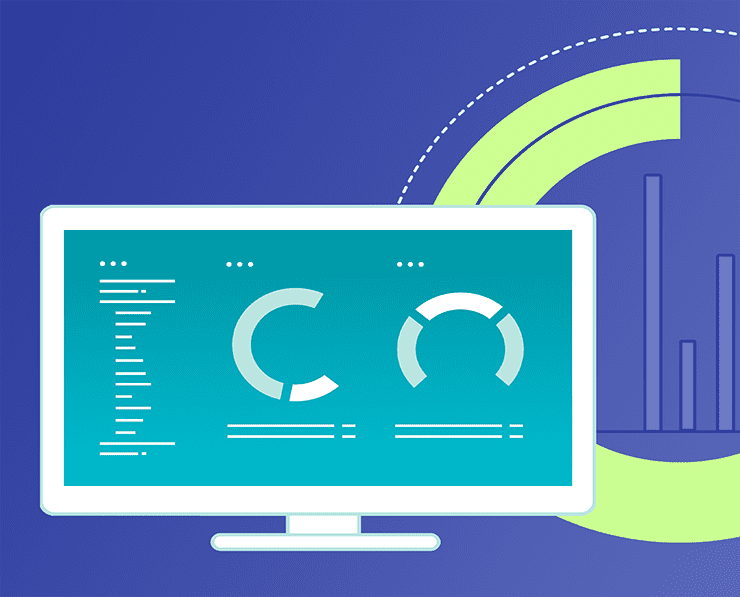Student Feedback
1z0-821: Oracle Solaris 11 System Administration Certification Video Training Course Outline
Introduction
Installing Oracle Solaris 11
Updating and Managing Packages
Administering Services
Administering Data Storage
Administering Oracle Solaris Zones
Administering a Physical Network
Administering User Accounts
System and File Access
System Processes and Tasks
Conclusion
Introduction
1z0-821: Oracle Solaris 11 System Administration Certification Video Training Course Info
Oracle Solaris 11 Exam 1Z0-821 Preparation | Hands-on System Administration Training
Comprehensive training program that covers every objective of the 1Z0-821 certification exam, along with the latest Solaris 11.1 enhancements.
What you will learn from this course
• Gain a complete understanding of Oracle Solaris 11 architecture and system components
• Learn how to install, configure, and manage Oracle Solaris 11 systems effectively
• Master the Image Packaging System (IPS) and understand how to manage software packages
• Learn how to configure and manage Oracle Solaris Zones for efficient virtualization
• Understand and implement the ZFS file system for data storage and reliability
• Explore system and file security controls to safeguard Solaris environments
• Learn how to manage users, groups, and permissions in Solaris 11
• Understand networking fundamentals and configuration in Solaris 11
• Prepare thoroughly for the Oracle Certified Associate 1Z0-821 exam
• Gain confidence to manage real-world Solaris 11 administration tasks
Learning Objectives
The primary objective of this course is to provide a strong foundation in Oracle Solaris 11 System Administration and prepare learners for the Oracle Certified Associate 1Z0-821 certification exam. Through comprehensive coverage of core topics, learners will develop the technical and practical skills needed to manage, maintain, and troubleshoot Oracle Solaris 11 systems. The course focuses on both theoretical understanding and practical application, ensuring learners can operate effectively in enterprise environments.
Learners will develop a solid grasp of Solaris 11 system architecture, including kernel operations, process management, and system resource allocation. They will understand the installation process of Solaris 11, system configuration, and the use of the Image Packaging System for managing software packages. The course introduces the fundamentals of Oracle Solaris Zones, demonstrating how to create, configure, and administer virtualized environments within Solaris.
Another key objective is to ensure learners master the ZFS file system, one of Solaris’s most powerful features. Students will learn about ZFS structure, dataset creation, snapshots, cloning, and data integrity verification. Additionally, the course covers essential networking concepts such as interface configuration, IP management, and network service administration.
By the end of this course, learners will have developed the ability to perform administrative tasks confidently, automate system processes, and apply best practices in Solaris 11 system management. They will be well-equipped to handle exam scenarios and real-world administration challenges with competence and efficiency.
Target Audience
This course is designed for a broad range of learners interested in mastering Oracle Solaris 11 System Administration and earning the Oracle Certified Associate 1Z0-821 credential. It caters to both individuals who are new to Solaris and those who already possess experience in system administration but wish to formalize and update their skills.
The ideal audience includes IT professionals aiming to expand their system administration expertise, particularly in Unix-based environments. System administrators working with Solaris 10 who plan to transition to Solaris 11 will find this course highly valuable due to the differences in package management, system installation, and virtualization tools.
Network administrators, IT engineers, and data center professionals seeking to manage large-scale Solaris infrastructures will also benefit from this course. The comprehensive coverage ensures learners can support enterprise operations, handle system security, and optimize performance in professional environments.
Students pursuing a career in system administration or IT operations can use this course to build a strong foundation and gain practical exposure to real-world Solaris management. This course is also beneficial for organizations training internal teams to handle Oracle Solaris deployments effectively.
Requirements
To make the most of this course, learners should have a basic understanding of operating systems and general IT concepts. Familiarity with Unix or Linux environments will help learners grasp Solaris commands and administration techniques more efficiently. While the course is beginner-friendly, prior experience with basic system management tasks such as user administration or file system navigation can enhance the learning experience.
A working installation of Solaris 11 is highly recommended to practice along with the lessons. Learners can install Solaris 11 on a physical machine or a virtual environment to gain hands-on experience. Access to an internet connection is also essential to download course materials, updates, and software packages during training.
Participants should have an eagerness to learn and explore command-line interfaces, as Solaris administration involves significant interaction with terminal-based tools. Having a stable workstation, sufficient storage space, and a virtual machine setup can help learners follow practical exercises smoothly.
Prerequisites
There are no strict prerequisites to enroll in this course, making it accessible to anyone interested in Oracle Solaris 11. However, it is recommended that learners have some prior exposure to basic computing concepts, such as file management, command-line usage, and system configuration. Understanding the fundamentals of networking and storage systems will be an added advantage.
A general knowledge of Linux or Unix-based operating systems can provide a helpful background since many Solaris commands and utilities share similar syntax and behavior. Familiarity with shell scripting or system automation tools can further enhance the learning process.
Those pursuing professional certification should also have an understanding of Oracle’s exam structure and objectives, as the course aligns closely with the official 1Z0-821 exam blueprint. Learners should prepare a dedicated study schedule, combining theoretical lessons with practical exercises to reinforce their understanding.
The course is self-paced and designed to accommodate different levels of learners. Whether you are starting your journey in Solaris administration or advancing your professional career, the material ensures that you acquire the necessary expertise to succeed.
Course Modules / Sections
The Oracle Solaris 11 System Administration course is designed in a structured and progressive format to ensure comprehensive coverage of all essential topics required for both practical mastery and certification success. Each section of the course builds upon the previous one, helping learners develop a strong foundation in Solaris administration concepts and then move toward advanced configuration, management, and troubleshooting techniques.
The course begins with an introduction to the Oracle Solaris 11 operating system, focusing on its architecture, features, and differences from previous Solaris versions. Learners gain a clear understanding of system components, core utilities, and administrative roles. The next module focuses on installation procedures, guiding students through the process of setting up Solaris 11 using both graphical and command-line interfaces. This includes automated installation tools, disk partitioning, and system configuration tasks necessary for a successful setup.
Following installation, the course transitions into package management using the Image Packaging System (IPS). Learners are introduced to repositories, package publishers, and update mechanisms. This section ensures administrators can effectively manage software components and maintain system integrity.
Another key module covers Oracle Solaris Zones, a feature that enables administrators to create virtualized environments for better resource utilization and system organization. The section explores types of zones, configuration steps, and best practices for deployment and management.
The file system management module focuses on ZFS, one of the most critical components of Solaris. Learners gain hands-on experience creating pools, datasets, snapshots, and clones. The section explains the ZFS architecture, its self-healing properties, and how it enhances data reliability and performance.
Subsequent modules deal with user and group management, access control, and security administration. These sections explain how to implement and manage authentication, authorization, and accounting mechanisms. Role-based access control (RBAC) and privilege management are also covered in depth to strengthen system security.
Networking is another vital area explored in detail. The networking module teaches learners how to configure interfaces, manage IP addresses, set up routing, and handle network services efficiently. The integration of networking concepts with system monitoring ensures learners can manage both local and remote environments seamlessly.
The course concludes with system monitoring, maintenance, and troubleshooting techniques. Learners explore tools for performance analysis, log management, and automated maintenance. Backup and recovery procedures are discussed to ensure data protection and business continuity. Together, these modules create a comprehensive roadmap for mastering Solaris 11 system administration and achieving Oracle certification.
Teaching Methodology
The Oracle Solaris 11 System Administration course employs a structured and learner-centered teaching methodology that combines theoretical explanations with practical demonstrations. The approach ensures that learners not only understand the core concepts but can also apply them effectively in real-world environments.
The course begins with detailed video lectures presented by an expert instructor who explains each concept using a clear and methodical teaching style. Every topic is supported by on-screen demonstrations showing how commands and configurations are executed within a Solaris environment. This visual learning technique reinforces understanding and provides a realistic experience similar to working on a live system.
Hands-on practice is a central component of the teaching methodology. Learners are encouraged to follow along with demonstrations using their own Solaris installations or virtual environments. This active learning approach helps solidify theoretical knowledge through direct interaction with system commands, configuration files, and administrative tools.
Each section of the course is designed to build upon the previous one. This sequential structure ensures that learners gradually progress from foundational concepts such as system installation and user management to advanced areas like virtualization, networking, and security. The modular layout allows learners to revisit specific topics whenever needed, making the course adaptable to different learning speeds and goals.
Real-world examples are integrated throughout the lessons to illustrate how Solaris 11 is used in enterprise environments. Scenarios such as managing multiple zones, configuring network routes, and setting up ZFS pools help bridge the gap between classroom learning and professional application.
In addition to demonstrations, learners are provided with downloadable work files that include configuration examples, scripts, and reference materials. These resources allow for independent practice beyond the course lectures. The instructor’s explanations are designed to clarify not just how tasks are performed, but why they are done in a particular way, promoting deeper understanding and problem-solving skills.
The course employs a self-paced format, giving learners the flexibility to study according to their schedules. This approach benefits both full-time professionals seeking certification and students exploring system administration for the first time. The emphasis on clarity, repetition, and reinforcement ensures consistent progress throughout the course.
To enhance retention, the course revisits key administrative procedures at multiple stages, reinforcing critical skills such as package updates, user management, and system monitoring. By maintaining a balance between conceptual clarity and practical engagement, the teaching methodology provides a well-rounded educational experience that meets both academic and industry standards.
Assessment & Evaluation
The Oracle Solaris 11 System Administration course incorporates a systematic assessment and evaluation framework to measure learning outcomes and ensure students achieve the required level of competency. The evaluation methods are designed to test theoretical understanding, practical skills, and readiness for the Oracle Certified Associate 1Z0-821 exam.
At the end of each major section, learners encounter review exercises designed to reinforce the material covered. These exercises encourage learners to practice key commands, configurations, and problem-solving steps in their own Solaris environments. Practical activities such as creating zones, configuring packages, or managing ZFS datasets serve as hands-on assessments that simulate real administrative tasks.
Progress assessments are integrated throughout the course to help learners gauge their understanding. These may include scenario-based exercises that challenge learners to apply concepts to specific system situations. This approach mirrors the kind of problem-solving expected in professional environments and during the certification exam.
Although the course is self-paced, learners are encouraged to set personal milestones after completing each module. These milestones help track progress and ensure consistent engagement with the course content. The instructor provides detailed explanations for common mistakes and best practices to improve efficiency and accuracy during administration.
For learners preparing for certification, the evaluation process includes comprehensive reviews of exam objectives. Each topic aligns with the Oracle 1Z0-821 blueprint to ensure complete coverage of the required skills. Learners are advised to revisit sections related to system configuration, networking, and file management as these areas carry significant weight in the exam.
In the final stages of the course, learners can undertake a full system administration project where they perform tasks such as installing Solaris, configuring users, managing packages, setting up zones, and implementing backup solutions. This project-based assessment consolidates all previously learned skills and serves as a practical demonstration of competence.
Self-evaluation plays a key role in the learning process. Learners are encouraged to maintain a practice log, documenting each administrative task they perform. This reflective approach helps identify areas that require further practice and promotes continuous improvement.
The assessment strategy emphasizes practical application over rote memorization. By focusing on real-world tasks and challenges, learners develop confidence and independence in managing Solaris 11 systems. The combination of structured exercises, scenario-based evaluations, and comprehensive project work ensures learners complete the course with a strong command of Solaris 11 administration and are well-prepared for certification success.
Benefits of the Course
The Oracle Solaris 11 System Administration course provides a wide range of benefits designed to enhance both professional growth and technical expertise. It offers learners a solid foundation in managing, configuring, and maintaining Oracle Solaris environments, equipping them with the practical knowledge needed to handle real-world administrative tasks. One of the primary benefits is the depth of coverage, as the course aligns directly with the Oracle Certified Associate 1Z0-821 exam objectives while also offering practical insights into day-to-day system management.
By completing this course, learners gain a recognized credential that validates their skills in Solaris administration, a valuable qualification in the IT industry. Oracle certifications are globally respected, and earning one helps professionals distinguish themselves in a competitive job market. The course enhances career opportunities, especially for those seeking roles such as system administrator, network administrator, or IT infrastructure specialist. Many organizations use Oracle Solaris for enterprise-level applications, so proficiency in its management significantly increases employability.
Another benefit lies in the practical, hands-on approach to learning. The course combines theoretical instruction with demonstrations and guided exercises that allow learners to interact with Solaris commands and system tools. This interactive style ensures a deeper understanding of how to apply concepts in real-world environments rather than simply memorizing commands. Learners gain practical problem-solving experience by configuring zones, managing packages, and troubleshooting system performance, which translates directly into workplace competency.
The self-paced structure of the course provides flexibility, allowing learners to progress at their own speed. This makes it suitable for working professionals who wish to upgrade their skills without interrupting their current employment. Learners can revisit modules, practice exercises multiple times, and focus on areas where they need additional understanding. This flexibility ensures that individuals can achieve mastery according to their personal learning style.
Another significant benefit is exposure to the advanced features of Solaris 11, such as the ZFS file system, Oracle Solaris Zones, and the Image Packaging System. Mastery of these tools enhances a learner’s ability to manage enterprise-grade systems with efficiency and security. The course also includes training on Solaris 11.1 updates, ensuring that learners are familiar with the latest enhancements introduced by Oracle.
Completing this course not only builds technical proficiency but also instills confidence in system administration. Learners develop an analytical mindset and the ability to diagnose and resolve system issues independently. This capability is essential for professionals managing mission-critical systems in enterprise environments.
The course also prepares learners for long-term growth. Skills acquired here serve as a foundation for higher-level certifications such as the Oracle Certified Professional (OCP) in Solaris System Administration. As learners progress in their careers, the knowledge from this course supports their transition into advanced administrative, engineering, or managerial roles.
Finally, the course fosters a comprehensive understanding of system security and reliability. With an emphasis on access control, auditing, and data protection, learners gain the expertise needed to maintain stable and secure systems. These skills are vital in today’s technology landscape, where reliability and compliance are key to operational success.
Course Duration
The Oracle Solaris 11 System Administration course is structured to provide a balanced learning experience, allowing adequate time for both theoretical learning and practical application. The duration of the course typically spans several weeks, depending on the learner’s schedule and pace. It is designed for self-paced study, meaning learners can complete it at their convenience while ensuring they absorb each concept thoroughly.
For learners dedicating full-time effort, the course may be completed within four to six weeks. Those balancing work or academic commitments may take longer, extending the course duration to eight or ten weeks. The self-paced design makes it adaptable to various learning speeds, enabling participants to manage their time effectively.
Each module is carefully planned to ensure comprehensive coverage of its subject matter. The early modules, which focus on installation and system configuration, require around one week of study, as they introduce foundational concepts and practical exercises. Subsequent modules, such as package management and virtualization using Solaris Zones, are more advanced and may require additional time to practice the commands and configurations introduced.
Learners are encouraged to allocate time for hands-on practice in a live or virtual Solaris environment. Practical sessions are an integral part of the course, and dedicating at least two to three hours per module for exercises can greatly enhance understanding and retention.
The course includes in-depth sections on ZFS file system management, security, and networking. These areas often involve complex concepts, and learners are advised to progress through them at a steady pace to ensure mastery. Each of these modules typically requires a full week of study, including video lectures, readings, and practice exercises.
Regular review sessions are recommended at the end of each section. Setting aside time to revisit previously covered material helps reinforce key principles and prepares learners for the certification exam. The final portion of the course, which focuses on system monitoring, troubleshooting, and backup strategies, consolidates all previously learned skills and may take one to two weeks to complete.
Although the duration can vary, a consistent and disciplined study schedule ensures success. Learners who dedicate a few hours each day can complete the program efficiently while retaining a strong grasp of all topics. The course’s modular design also allows learners to pause and resume their studies without losing progress.
In total, the course offers a complete learning experience that fits within a manageable timeframe, making it accessible to students, professionals, and IT enthusiasts alike. The duration provides the flexibility necessary for learners to build solid expertise in Solaris 11 administration while balancing other personal and professional responsibilities.
Tools & Resources Required
To complete the Oracle Solaris 11 System Administration course, learners need access to a set of essential tools and resources that enable both theoretical learning and practical experience. The most important requirement is a functional installation of Oracle Solaris 11. Learners can install Solaris 11 on a dedicated computer, a dual-boot system, or a virtual machine using platforms such as Oracle VM VirtualBox or VMware Workstation. Running Solaris in a virtualized environment allows learners to practice configurations, test commands, and simulate administrative scenarios safely.
A computer with a multi-core processor, at least 8 GB of RAM, and sufficient disk space (minimum 50 GB recommended) is necessary to run the Solaris virtual machine smoothly. Having an additional storage drive or partition helps create ZFS pools and practice data management exercises. A stable internet connection is also important, as learners will need to download course materials, package updates, and reference documentation.
Access to the Oracle Solaris 11 ISO file is essential for installation. This file can be obtained from Oracle’s official website after registration. Learners should ensure they download the correct version that matches the course instructions, as updates may include new features or commands.
For hands-on practice, learners should install additional utilities such as SSH clients, terminal emulators, and text editors. Tools like PuTTY, MobaXterm, or integrated terminal environments make it easier to connect to the Solaris system and execute commands efficiently. Having access to a text editor such as Vim or Nano is important for editing configuration files during practice sessions.
Documentation and reference materials play a key role in mastering system administration. Learners are encouraged to use Oracle’s official Solaris documentation library for additional reading. These resources provide detailed explanations of commands, parameters, and system management tools. Keeping a personal study notebook or digital log is also recommended for recording commands, configurations, and observations during the course.
The course provides downloadable work files, which include configuration examples, scripts, and sample exercises. These materials should be stored in an organized folder structure for easy access. Learners may also want to set up multiple virtual machines or zones within Solaris to practice networking, resource allocation, and virtualization concepts.
Command-line proficiency is essential, as much of the course is conducted through terminal operations. Learners should familiarize themselves with the Solaris shell environment, commonly the Bash or Korn shell. Understanding shell navigation, piping, and redirection will enhance productivity and make the exercises more effective.
Backup storage is another valuable resource. Creating snapshots or external backups of virtual machines before performing major changes helps protect progress and allows learners to restore systems easily if errors occur during experimentation.
Finally, learners should prepare a quiet and dedicated workspace with minimal distractions. Having a dual-monitor setup can be beneficial, allowing one screen for video lectures and the other for active practice. A consistent routine and organized environment contribute to effective learning and long-term retention.
By ensuring all necessary tools and resources are available before beginning, learners can fully engage with the course material and gain a complete, hands-on understanding of Oracle Solaris 11 System Administration. These resources create a realistic training environment that closely mirrors professional system administration tasks, ensuring readiness for both the certification exam and workplace challenges.
Career Opportunities
The Oracle Solaris 11 System Administration course opens a wide range of career opportunities for professionals in the field of information technology. Earning the Oracle Certified Associate credential for Solaris 11 validates a candidate’s technical skills and demonstrates their ability to manage enterprise-level systems effectively. As organizations across industries rely on stable, secure, and high-performance operating systems, qualified Solaris administrators continue to be in demand for critical infrastructure roles.
One of the most direct career paths following this certification is that of a system administrator. Solaris administrators are responsible for managing, configuring, and maintaining servers that run Oracle Solaris, ensuring high availability, security, and performance. They play a vital role in enterprise environments, supporting application deployment, user management, and storage administration. The skills gained through this course prepare professionals to take full responsibility for system reliability and operational efficiency.
Another prominent opportunity lies in the role of a network administrator. With the course’s strong focus on networking concepts, including interface configuration, IP management, and routing, learners are equipped to handle complex network infrastructures. Network administrators with Solaris expertise can manage hybrid environments and ensure seamless integration of Oracle systems within larger network frameworks.
IT support engineers and technical specialists can also benefit from this certification. Many organizations seek professionals capable of troubleshooting issues across diverse platforms, and Solaris knowledge adds significant value to an engineer’s profile. It allows them to diagnose and resolve system problems efficiently, apply updates, and implement security measures that align with organizational policies.
Cloud computing has become an essential component of modern IT infrastructure, and Solaris continues to play an important role in many private and hybrid cloud solutions. Administrators trained in Solaris 11 can transition into cloud operations or DevOps roles, where system automation, virtualization, and security are key responsibilities. Solaris Zones, for example, are frequently used in cloud environments for resource optimization, and professionals who master these concepts have an advantage in managing scalable architectures.
The certification also benefits those aiming for careers in IT consulting. Consultants with Oracle Solaris expertise can assist organizations in system design, migration, and performance optimization projects. They provide guidance on implementing best practices, ensuring system stability, and integrating Solaris systems with other enterprise technologies.
Security administration is another growing field where Solaris knowledge is valuable. As cybersecurity becomes a top priority for organizations, administrators skilled in managing access control, auditing, and system permissions play an essential role in maintaining secure computing environments. Solaris 11 offers advanced security mechanisms, and expertise in these areas can lead to specialized roles focused on information assurance and compliance.
With experience, Solaris administrators often advance to senior-level positions such as IT infrastructure manager, system architect, or data center operations lead. These roles involve overseeing multiple systems, developing strategic IT policies, and ensuring that infrastructure aligns with organizational goals. The foundation built through this course provides the technical and analytical abilities required to succeed in such leadership positions.
Freelance and contract opportunities are also available for Solaris professionals. Many companies hire short-term experts to implement upgrades, manage system migrations, or troubleshoot performance issues. Certified professionals can leverage their skills to work independently or as part of specialized consulting teams, gaining flexibility and exposure to a wide variety of enterprise systems.
Overall, the Oracle Solaris 11 System Administration certification serves as a gateway to a rewarding and sustainable IT career. It demonstrates technical expertise, practical problem-solving skills, and an ability to manage complex systems—qualities that employers value highly in today’s competitive technology landscape.
Conclusion
The Oracle Solaris 11 System Administration course represents a comprehensive learning journey designed to prepare learners for professional excellence and certification success. It covers every essential aspect of managing Solaris 11 systems, from installation and configuration to virtualization, networking, and security. The structured curriculum provides both theoretical understanding and hands-on experience, enabling learners to confidently operate within enterprise environments.
This course not only equips participants with the skills needed to pass the Oracle Certified Associate 1Z0-821 exam but also builds a deep practical understanding of system administration. By mastering the Image Packaging System, Solaris Zones, and ZFS file system, learners develop the ability to maintain efficient and secure computing environments. These competencies are directly applicable to real-world situations, where system reliability and performance are critical to business operations.
The training also emphasizes problem-solving, encouraging learners to think critically and address system challenges effectively. Through guided exercises and independent practice, learners gain confidence in handling administrative tasks, troubleshooting issues, and implementing best practices in system management. The ability to work with Oracle Solaris 11, one of the most robust enterprise operating systems, gives professionals an advantage in the technology job market.
Beyond technical proficiency, the course fosters a mindset of precision and continuous improvement. System administrators must constantly adapt to evolving technologies, and the skills acquired in this program provide a strong foundation for lifelong learning. The knowledge gained here supports future growth into advanced certifications, managerial positions, and specialized roles within IT infrastructure.
The value of this course extends beyond certification. It cultivates a practical understanding of how enterprise systems function, teaching learners to optimize resources, secure environments, and maintain operational excellence. Organizations rely on administrators who can ensure uptime, manage performance, and prevent security breaches, and this course prepares learners to meet those expectations with confidence.
For beginners, the course provides a gateway into the world of system administration, offering clear guidance and structured learning that builds competence from the ground up. For experienced professionals, it offers an opportunity to refine existing skills, update knowledge with Solaris 11.1 features, and validate expertise through recognized certification.
The flexibility of the self-paced format allows learners to study at their convenience while maintaining consistency and depth. By engaging with the provided resources, following along with demonstrations, and applying each concept in practice, learners develop the independence and skill set needed to excel in their careers.
The importance of skilled Solaris administrators continues to grow as organizations depend on secure, scalable, and high-performing systems. Completing this course not only strengthens technical ability but also opens doors to diverse and well-paying job opportunities in both private and public sectors. It establishes a professional reputation grounded in knowledge, reliability, and practical excellence.
Enroll today
Enrollment in the Oracle Solaris 11 System Administration course is the first step toward achieving a respected certification and building a strong professional foundation in IT infrastructure management. By joining this program, learners gain access to expert instruction, detailed tutorials, and practical exercises that make complex system concepts easy to understand and apply.
This course is ideal for anyone seeking to advance their career in system administration or enhance their technical qualifications. It offers flexibility, comprehensive coverage, and real-world relevance, making it suitable for both new learners and seasoned professionals. Every topic is presented with clarity, ensuring learners develop the skills needed to succeed in their certification exam and professional roles.
Taking this course ensures that learners not only prepare for the Oracle Certified Associate 1Z0-821 exam but also acquire practical experience that extends far beyond the classroom. With its focus on current technologies, best practices, and enterprise-level skills, it provides the tools necessary to excel in a demanding and competitive IT environment.
Start your journey today and take the opportunity to become a certified Oracle Solaris 11 System Administrator. Equip yourself with the knowledge, confidence, and practical expertise to build a successful and fulfilling career in information technology.



